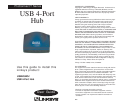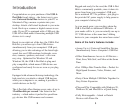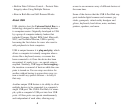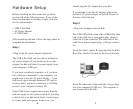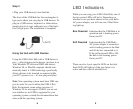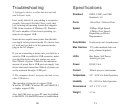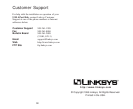
access to an enormous array of different devices at
the same time.
Some of the devices that the USB 4-Port Hub sup-
ports include digital cameras and scanners, joy-
sticks, gamepads, virtual reality headgear and
gloves, keyboards, hard drives, mice, modems,
printers, speakers, and more.
5
• Built-in Data Collision Control -- Protects Data
Integrity when Using Multiple Devices
• Runs in Both Bus and Self-Powered Modes
About USB
USB, which is short for Universal Serial Bus, is a
technology designed to make connecting devices
to computers easier. Originally developed in 1996
by a group of computer industry leaders that
included Compaq, Digital, IBM, Intel, Microsoft,
NEC, and Northern Telecom, USB is quickly
becoming the first choice for users who want to
add peripherals to their computers.
USB is unique because it is plug-and-play, which
allows a computer to instantly recognize when a
device like a keyboard, mouse, or scanner has
been connected to it. Once the device has been
recognized, it’s ready to go --no special setup is
required. Similarly, USB supports hot-swapping --
the insertion or removal of devices while the com-
puter is turned on. You can swap one device for
another without having to power down your sys-
tem or install any special software -- it really is
that easy.
Another unique USB feature is its ability to allow
multiple devices to be connected to a computer’s
single USB port. The USB 4-Port Hub, for exam-
ple, splits a computer’s USB port into four USB
ports. All four ports can operate simultaneously
and independent of each other, allowing easy
4



